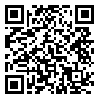BibTeX | RIS | EndNote | Medlars | ProCite | Reference Manager | RefWorks
Send citation to:
URL: http://jstnar.iut.ac.ir/article-1-1885-en.html
Nitrogen use efficiency is relatively low in irrigated rice fields because of rapid N losses from ammonia volatilization, the nitrification, surface runoff, and leaching in the soil-flood water system. Since the plant N represents the total N supply of all sources, plant N status will be a good indicator of N availability to crops at any given time. Leaf colour chart (LCC) is a simple portable diagnostic tool, to determine the timing of N top dressing. LCC was developed to increase the N use efficiency at irrigated rice fields. A field experiment was carried out to compare the effect of N split application and LCC on the grain yield and agronomic and recovery efficiency of Fajr variety in 2009. The experiment was conducted in a randomized complete block design with 12 treatments in 3 replications on Fajr cultivar. Twelve treatments included control treatments (without nitrogen fertilizer) and 45, 90, 135 kg N ha-1 for three times each and two treatments included LCC treatments 4 and 5. As a result, all treatments showed significant (p=0.05) grain yield increase in comparison to control. Increased yield was observed up to 135 kgN/ha (55.2%). Grain yield of LCC treatments was higher than split treatments. LCC treatment 5 had higher AE, RE, PE, PFP and IE than LCC 4 and fixed – 135 at the less N rate in all fields. Therefore, the results of different fertilizer treatments showed that the LCC treatment 5 with maximum grain yield, agronomic, physiological, internal and relative efficiency factors can be considered as the best management method for using nitrogen fertilizer and preventing from excess use of nitrogen fertilizer in Fajr cultivar.
Received: 2012/01/2 | Accepted: 2017/02/22 | Published: 2017/11/12
| Rights and permissions | |
 | This work is licensed under a Creative Commons Attribution-NonCommercial 4.0 International License. |







